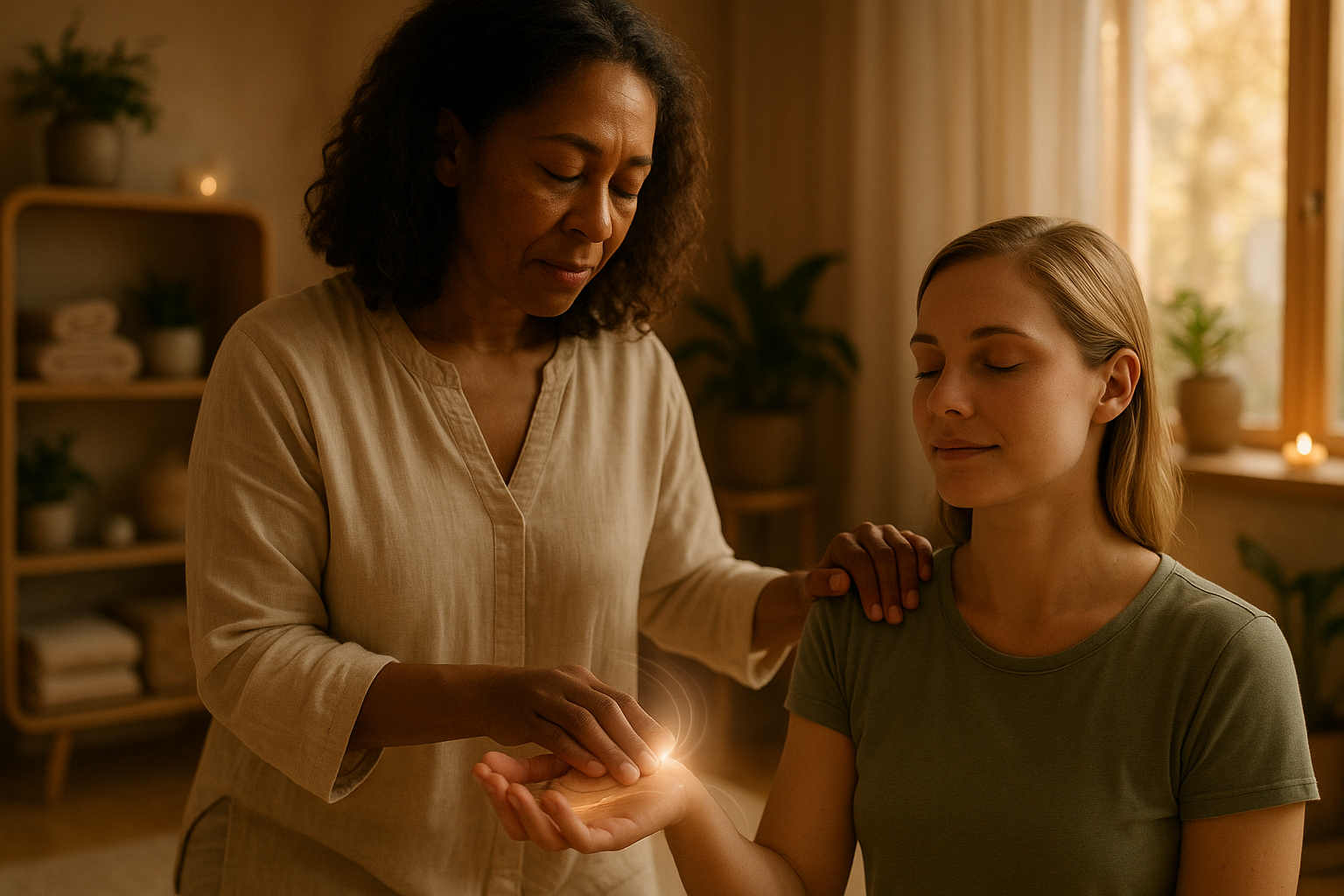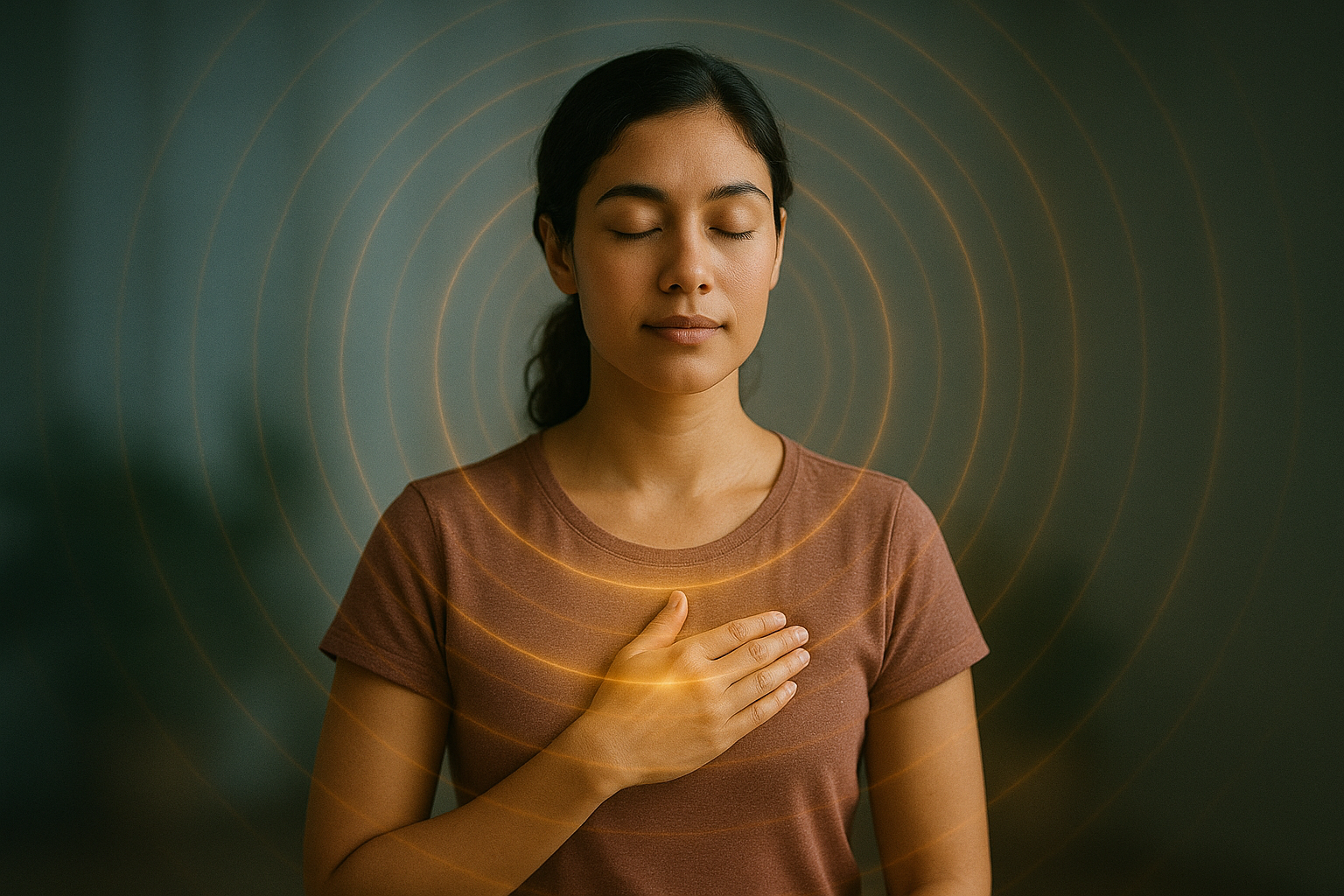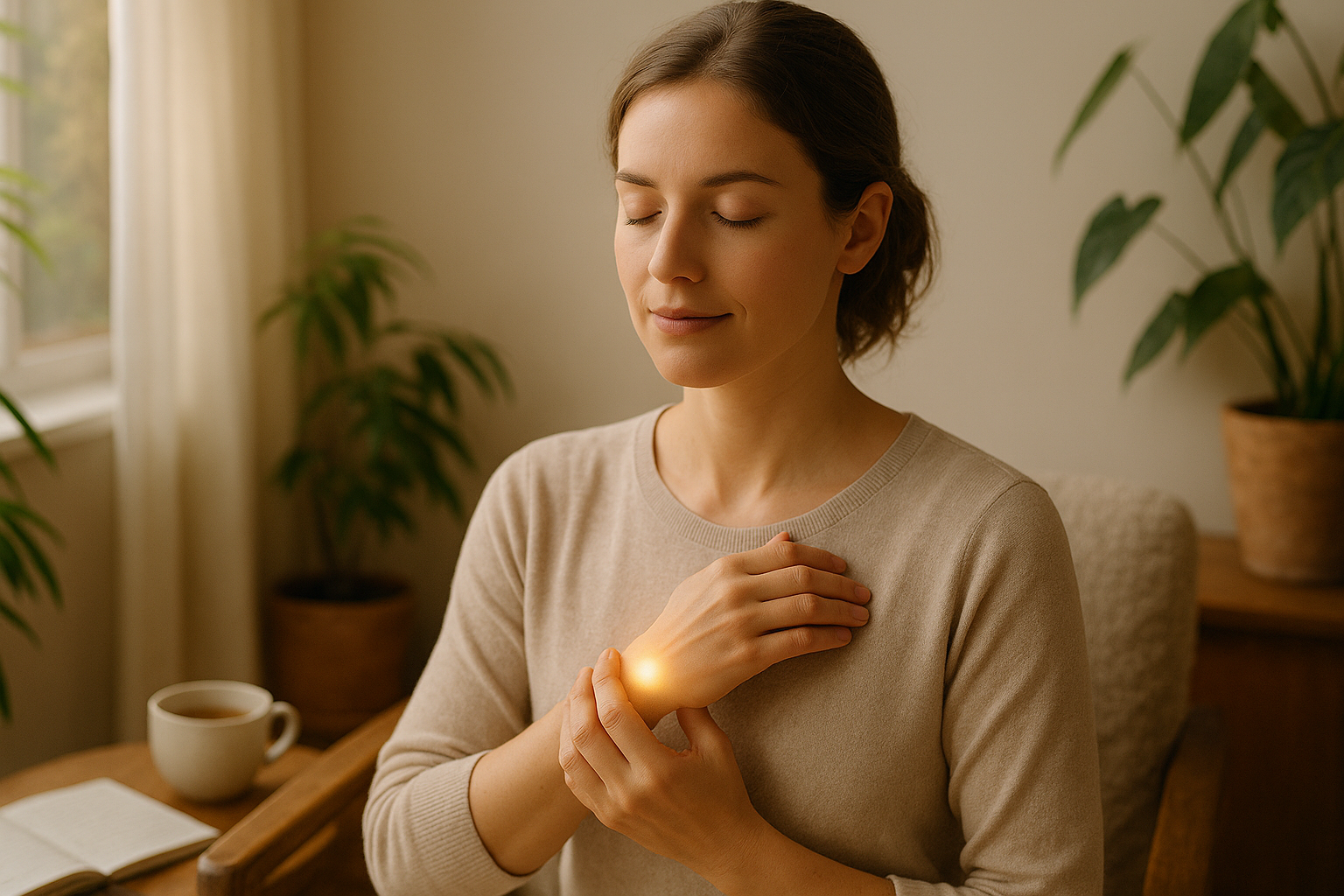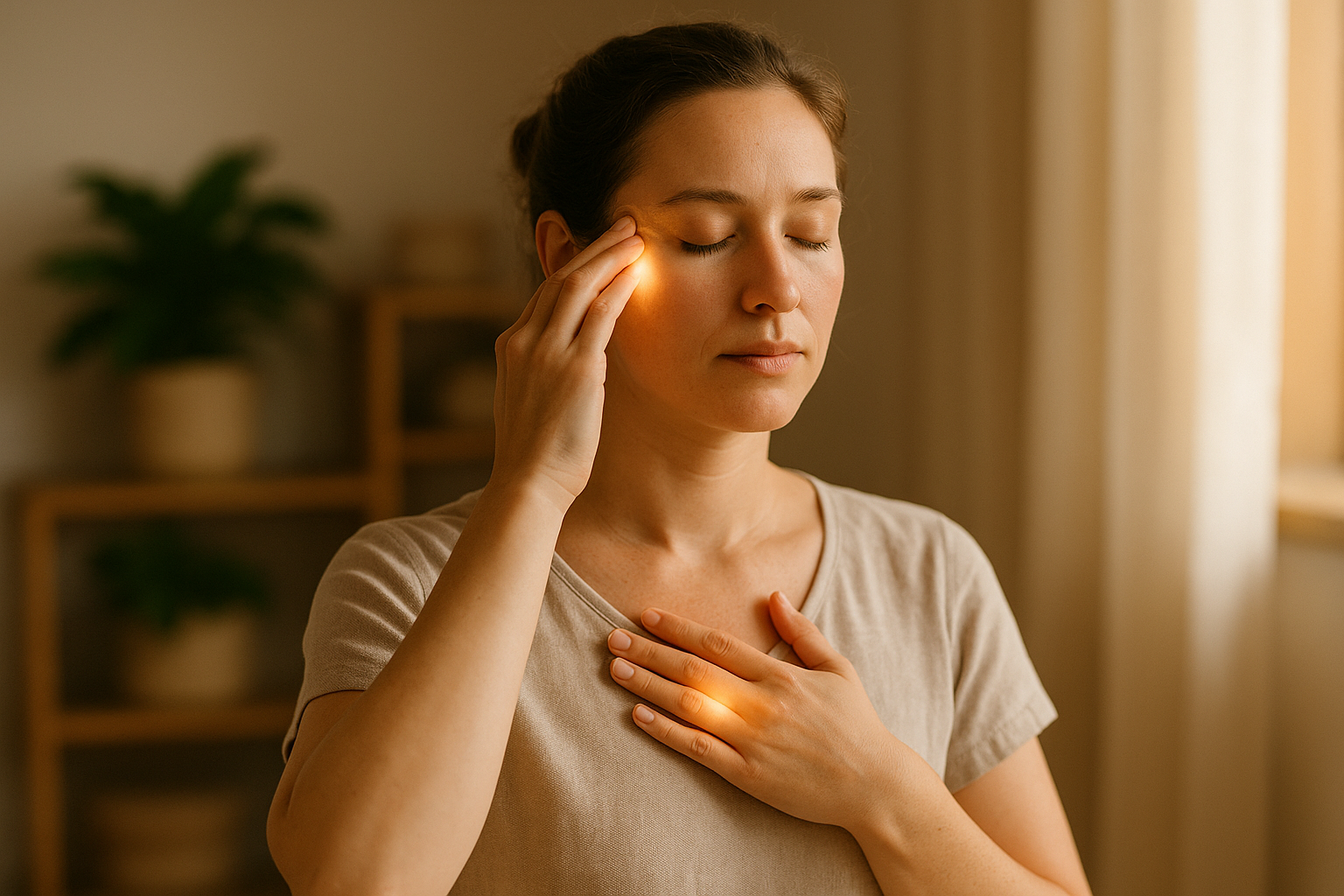Estimated Reading Time: 10–12 minutes
What You Will Learn
-
How acupressure works and why it influences both physical and emotional balance.
-
The link between the body’s energy meridians and emotional regulation.
-
Step-by-step guidance for using simple acupressure techniques to ease stress, anxiety, and emotional fatigue.
-
How to build a daily self-care ritual with acupressure to promote calm, resilience, and harmony.
-
Research-backed insights on touch therapy and mind–body connection.
Introduction: The Power of Touch in Emotional Healing
 Touch is the first language we learn. Long before we speak, we are held, soothed, and comforted through physical contact. Modern science confirms what ancient wisdom has long known: touch heals — not only physically, but emotionally.
Touch is the first language we learn. Long before we speak, we are held, soothed, and comforted through physical contact. Modern science confirms what ancient wisdom has long known: touch heals — not only physically, but emotionally.
Among the many forms of healing touch, acupressure stands out as one of the simplest, most accessible ways to restore balance within. Originating from traditional Chinese medicine (TCM), acupressure uses gentle pressure on specific points along the body’s meridians — invisible energy channels that influence both our organs and our emotions.
In a world where emotional overload and chronic stress have become the norm, this ancient art offers a profoundly simple message: healing starts with touch.
The Science and Philosophy Behind Acupressure
Acupressure stems from the same principles as acupuncture, but instead of needles, practitioners use the fingers, palms, or a rounded object to apply pressure to key points.
According to TCM, life energy — known as Qi (pronounced “chee”) — flows through twelve major meridians that correspond to vital organs and emotional states. When Qi flows freely, the body and mind are in harmony. When it’s blocked, stagnated, or depleted, symptoms appear: physical pain, fatigue, anxiety, sadness, or irritability.
From a Western perspective, acupressure stimulates the nervous system, releases endorphins, and reduces cortisol, the stress hormone. Studies have found that it can help lower heart rate, improve sleep, and reduce tension-related disorders such as headaches and muscle pain (Lee et al., 2019; Kaviani et al., 2021).
What’s remarkable is that the same acupressure points that ease physical tension often soothe emotional strain. For instance, pressing the “Heart 7” point on the wrist — known as Shenmen, or “Spirit Gate” — is believed to calm the mind, reduce anxiety, and improve emotional clarity.
Acupressure reminds us that the body and emotions are not separate worlds — they are intertwined rivers, flowing and influencing one another with every heartbeat.
The Mind–Body Connection: Emotions as Energy
Modern psychology echoes this ancient truth. Emotions are not only mental states but also bodily experiences. Anxiety tightens the chest; sadness weighs down the shoulders; anger quickens the pulse.
According to Dr. Candace Pert’s research on neuropeptides (Pert, 1997), emotions exist as chemical messengers throughout the body, not confined to the brain alone. Our emotional experiences are literally embodied.
Acupressure, therefore, becomes a language — a way of “speaking” to the body to influence emotional states. When we press, breathe, and release, we signal to the nervous system: You are safe. You can relax now.
This awareness aligns with the principles of positive psychology — particularly the PERMA model proposed by Dr. Martin Seligman (2011), which includes Positive Emotions, Engagement, Relationships, Meaning, and Achievement. Acupressure supports these dimensions by fostering emotional regulation, mindfulness, and a deeper connection to the self — all of which nurture well-being.
Touch as an Emotional Regulator
In moments of distress, instinct drives us to place a hand on our heart or our head. This simple act is a self-soothing response — one that acupressure refines into intentional healing.
A 2020 study in Frontiers in Psychology found that touch-based interventions, including acupressure, significantly reduced perceived stress and anxiety levels by activating the parasympathetic nervous system — the body’s natural “rest and restore” mechanism (Field, 2020).
Moreover, physical touch increases oxytocin, often called the “bonding hormone.” This hormone plays a crucial role in emotional stability, trust, and social connection. By learning to apply mindful touch through acupressure, we engage our biology in the service of psychological balance.
Touch, then, is not only a physical gesture. It’s an emotional conversation — one that tells our nervous system, I am here for you.
Five Emotional Pathways to Healing Through Acupressure
Below are five acupressure points that support emotional harmony. They can be used individually or as part of a calming daily practice.
1. Heart 7 (Shenmen — “Spirit Gate”)
Location: On the wrist crease, in line with the pinky finger.
Use for: Anxiety, restlessness, emotional turbulence.
How to apply:
Press gently with your thumb, holding steady pressure for 1–2 minutes while breathing slowly. Visualize warmth radiating from the point to your heart. Repeat on the other wrist.
Why it works:
Heart 7 regulates the heart meridian, which governs joy and emotional balance. By calming this channel, it eases nervous energy and promotes peaceful sleep.
2. Pericardium 6 (Neiguan — “Inner Gate”)
Location: Three finger-widths below the wrist crease, between the two tendons.
Use for: Anxiety, nausea, grief, and emotional overwhelm.
How to apply:
Use your thumb to press gently but firmly into the point. Inhale for four counts, exhale for six. Continue for two minutes per wrist.
Why it works:
This point connects the chest and the heart protector — metaphorically guarding us from emotional pain while allowing connection. It’s often used to ease the physical sensations of anxiety (tight chest, shallow breath).
3. Governing Vessel 20 (Baihui — “Hundred Meetings”)
 Location: At the crown of the head, where a line drawn from ear to ear crosses the center.
Location: At the crown of the head, where a line drawn from ear to ear crosses the center.
Use for: Fatigue, mental fog, depression, and disconnection.
How to apply:
Using your fingertips, apply gentle circular pressure to the crown of your head. Close your eyes and imagine light filling the top of your body.
Why it works:
This point is thought to gather and uplift energy, helping restore clarity and elevate mood. It’s often used to counter emotional heaviness.
4. Liver 3 (Taichong — “Great Rushing”)
Location: On the top of the foot, between the big toe and second toe, about two inches back.
Use for: Anger, irritability, emotional stagnation.
How to apply:
Press with your thumb or the knuckle of your finger for 1–2 minutes on each foot. Breathe deeply, visualizing tension flowing out through your feet.
Why it works:
The liver meridian governs the smooth flow of energy and emotions. When Qi in the liver is stagnant, frustration builds up. Activating this point restores flow and emotional flexibility.
5. Conception Vessel 17 (Shanzhong — “Sea of Tranquility”)
Location: In the center of the chest, between the nipples.
Use for: Grief, sadness, self-compassion.
How to apply:
Place your palm or fingertips on your sternum and apply light pressure while breathing deeply into your heart area.
Why it works:
Stimulating this point releases emotional constriction in the chest and enhances feelings of openness and compassion.
Creating a Daily Acupressure Ritual
The beauty of acupressure is its simplicity — no tools, no special equipment, just your hands and awareness.
Here’s how to build a 10-minute self-healing practice:
-
Find a quiet space. Sit comfortably and take a few slow breaths to center yourself.
-
Set an intention. For example: “I release anxiety and welcome calm.”
-
Choose two or three points based on what you feel that day — perhaps Heart 7 and Liver 3.
-
Apply gentle pressure for one to two minutes each, breathing steadily.
-
Finish with stillness. Place your hands over your heart or belly and feel the energy settle.
Consistency matters more than intensity. Practiced daily, these few minutes of mindful touch create a buffer between you and life’s emotional turbulence. Over time, your body learns what safety feels like — and returns there more easily.
Acupressure and Emotional Resilience
Emotional harmony does not mean never feeling sadness or anger. It means allowing emotions to move through you rather than becoming stuck within you.
Acupressure helps cultivate resilience — the ability to recover and adapt. When the body is in balance, the mind can process stress more efficiently.
Research from the Journal of Alternative and Complementary Medicine (Mittleman et al., 2022) suggests that acupressure significantly reduces symptoms of depression and anxiety among participants who practiced it for 10 minutes daily.
In this sense, acupressure works like mindfulness: it brings awareness to the body, slows the breath, and restores connection between thought and sensation. This integration is the foundation of emotional intelligence — and emotional freedom.
Integrating Acupressure with Modern Self-Care
Acupressure fits seamlessly into modern routines. You can practice it while:
-
Sitting at your desk during a stressful workday.
-
Pausing between tasks to reset your energy.
-
Before sleep, to calm racing thoughts.
-
During meditation, yoga, or breathwork.
It can also be integrated with other evidence-based practices, such as gratitude journaling, character strengths awareness, or self-compassion exercises, enhancing emotional regulation and self-awareness.
When you combine physical and psychological tools, you reinforce both pathways of healing — the body and the mind — creating a loop of self-care that sustains itself.
Cautions and Mindful Practice
While acupressure is safe for most people, remember these guidelines:
-
Avoid pressing directly on open wounds, swollen areas, or inflamed skin.
-
If you are pregnant, avoid points associated with stimulating uterine contractions (consult a licensed practitioner).
-
Acupressure should complement, not replace, professional medical or psychological care.
Healing is holistic — and that includes knowing when to seek guidance from healthcare providers, therapists, or acupuncturists trained in emotional support.
The Deeper Message: Listening Through Touch
Every press of the fingertip can become a moment of mindfulness. When you touch an acupressure point, you are not only stimulating energy — you are listening to your body’s story.
You might notice tension where you didn’t expect it, or emotion rising to the surface. Instead of resisting, stay curious. The body holds wisdom, and touch can help unlock it.
Healing, in this way, becomes less about “fixing” and more about befriending — befriending your sensations, your emotions, and your own capacity for renewal.
As psychologist Peter Levine, founder of Somatic Experiencing, writes:
“Trauma is not what happens to us, but what we hold inside in the absence of an empathetic witness.”
Through acupressure, you become that empathetic witness — for yourself.
Conclusion: Harmony Is Within Reach
 Acupressure teaches us that emotional harmony is not an abstract ideal — it’s something we can touch, literally. Every gentle press is an invitation to come home to the body, to breathe, and to feel whole again.
Acupressure teaches us that emotional harmony is not an abstract ideal — it’s something we can touch, literally. Every gentle press is an invitation to come home to the body, to breathe, and to feel whole again.
In an overstimulated world, this ancient practice offers a quiet revolution: healing through simplicity, awareness, and compassion.
So tonight, before you reach for your phone or scroll through your thoughts, take a moment. Place your hand on your chest. Feel the warmth. Breathe. Let touch remind you that harmony begins here — within you.
References
-
Field, T. (2020). Touch and emotional well-being: A review. Frontiers in Psychology, 11, 1457.
-
Kaviani, M., et al. (2021). Effects of acupressure on stress and anxiety: A systematic review. Complementary Therapies in Medicine, 59, 102734.
-
Lee, J., Kim, M., & Shin, Y. (2019). The effect of self-acupressure on stress and fatigue in adults: A meta-analysis. Journal of Alternative and Complementary Medicine, 25(3), 258–266.
-
Levine, P. (2015). Trauma and Memory: Brain and Body in a Search for the Living Past. North Atlantic Books.
-
Mittleman, E., et al. (2022). Self-administered acupressure for emotional well-being: A randomized controlled study. Journal of Alternative and Complementary Medicine, 28(2), 185–194.
-
Pert, C. (1997). Molecules of Emotion: The Science Behind Mind–Body Medicine. Scribner.
-
Seligman, M. E. P. (2011). Flourish: A Visionary New Understanding of Happiness and Well-Being. Free Press.





